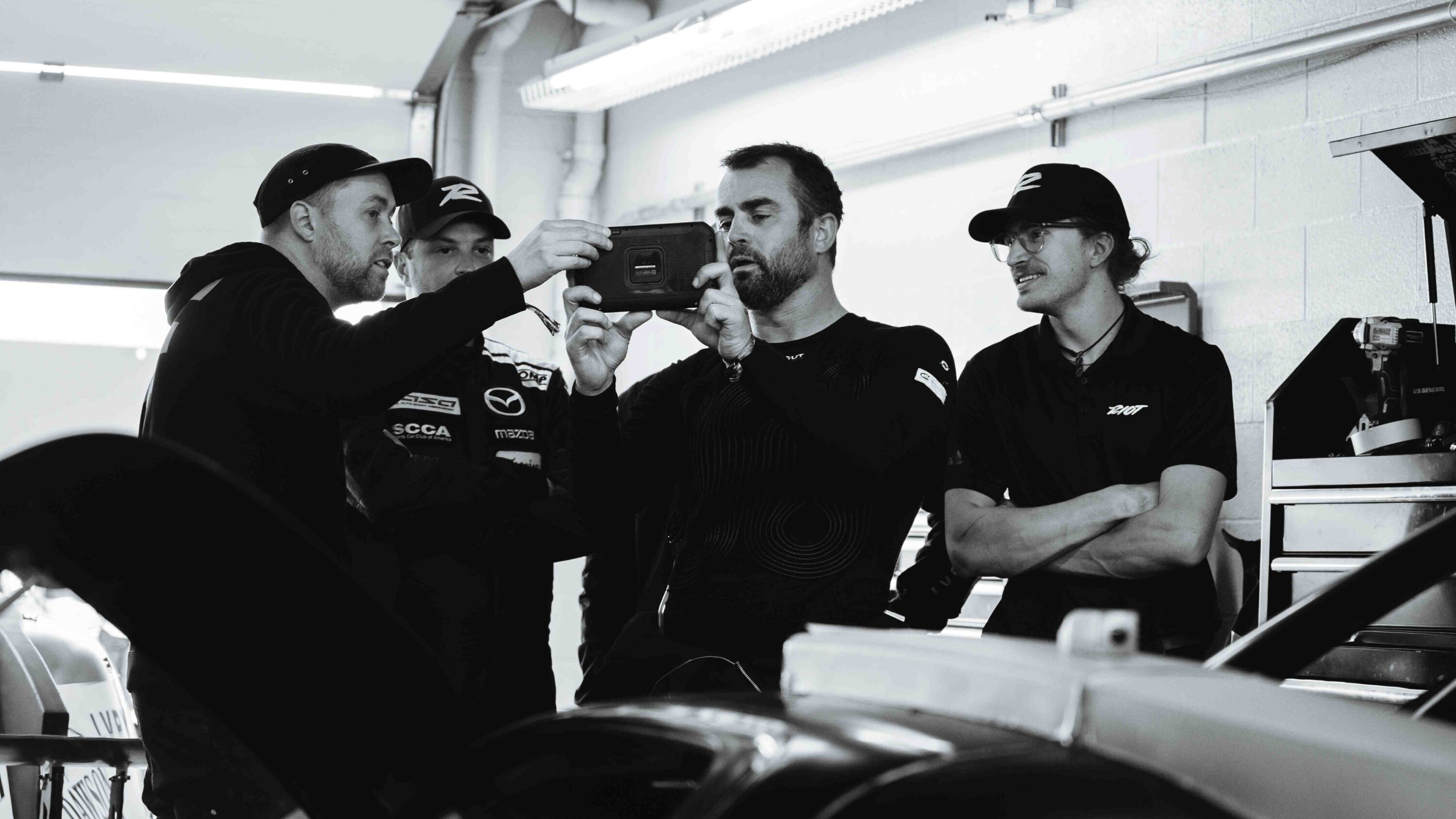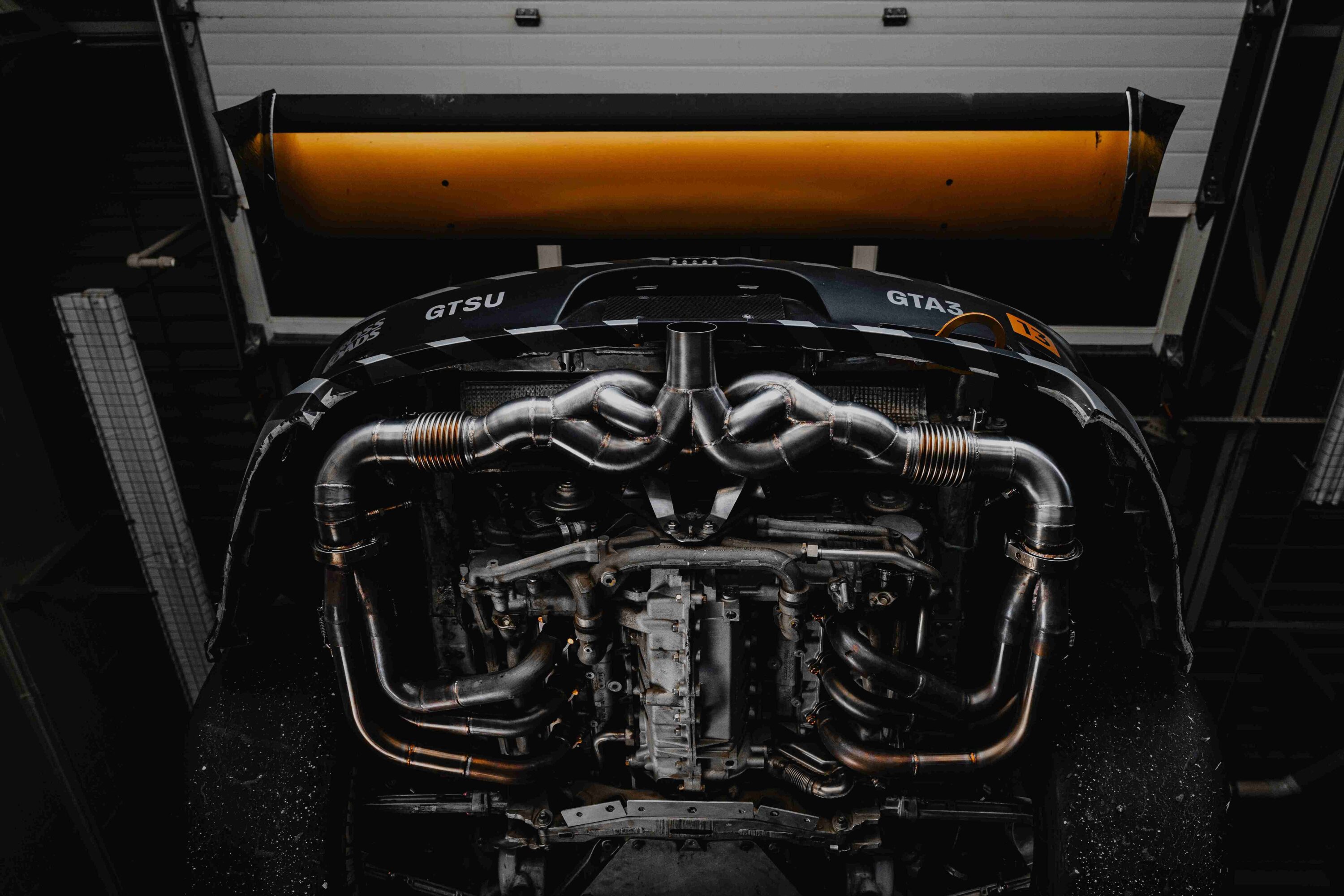Welcome back — if you’re new to this series, this is a documented process for learning a new race track, applied to Chuckwalla Valley Raceway.
This article can be read on it’s own, but feel free to check out the links to the other parts of the series!
Learning a New Race Track Series:
- Introduction & Method Overview
- Studying the Track (that’s this article)
- Getting Tech & Registration Squared-Away
- The Race Weekend
Studying the Track
The best two tools for learning a track before you even get there are: a track video (ideally with some basic data) and a good track map to make notes on. These resources are free and can be used well in advance of race day to get you acquainted with a new track so you can get the most out of your seat time.
Using Track Video
The goal of this is to get an idea of the relative speed of the various corners, a racing line, and reference points for braking, turn-in, apexes, and so-on.
Pretty straightforward, right?
Yes, but consider your material wisely.
You want to find the a video of the most-applicable car, same track configuration, highest-quality video, and fastest lap you can.
The Most-Applicable Car
This means:
- Same car as yours (model and engine)
- Same basic setup as yours (weight, suspension, aero, tires — if you can)
Same car and similar setup are the most import. If you’re running a NB1 Spec Miata, find video from a NB1 Spec Miata! Anyone whose run a Spec series will tell you that the nuanced differences between even the balanced NA6, NA8, NB1, and NB2 Spec Miatas matter: particularly on apex speeds and shift points. I have found that NAs are generally similar, as are NBs, but NA vs NB can vary significantly — this is due to their relative weight and suspension geometry differences.
Whatever you do, don’t get video from someone who has an LS-swap, runs super suspension, or has major body work to accommodate their wide-ass tires (unless you do!)
Best bet: pick the same car. Backup plan: pick the same class of car
Same Track Configuration
Track configuration can be fudged, a bit. Some tracks run many configurations, so finding the exact one you’re going to run can be tricky (looking at you, Sprint Mountain). So if all else fails, focus on:
- Same direction (Clockwise vs Counter-Clockwise matters, obviously)
- Same major corners
I remember one time preparing for a Porsche Owners Club race at Spring Mountain. We were running a modified Mansell D — there is no Mansell D on the Spring Mountain site… and the club ran it with a modification, to boot! After combing over YouTube, the best I could find was a 944 Spec race running the standard Mansell course.
I missed out on a bus-stop towards the end of the back straight, as well as a cut-back before launching onto the front-straight. No big deal, though, because I learned the other 15+ corners and filled in the blanks — earned myself a track record in R9S Class, too!
Highest-Quality Video
Simple, but important.
For me, I need the following things:
- In-car perspective so I can see the track from the driver’s point of view, as well as see their hands
- On-screen speed
With those things, I can quickly identify tight corners, fast corners, and gear selection (though the last one is less of an issue if the car is loud enough!)
Nice-to-have:
- Throttle & Brake indicators
- Lap Time (if not available, you can calculate a rough time down to the minute and second by looking at the video timer, which will be close-enough)
- Track Map w/ position dot
If someone is running an AiM system with Smarty Cam, you’re going to get almost all of those things. That said, most decent-quality phone apps will give you the two most important ones.
I like the data provided from the Garmin Catalyst, as well, but the camera position isn’t optimal for my purposes.
Fastest Lap Possible (in your class!)
This one is also very simple. You want the data from someone who is fast — by comparing their lap times to the track record and times run that weekend, you can validate just how fast they are.
Get video from a fast person, because they’re likely going to show you the right things to focus on.
Using the Track Map
Fortunately for me, learning Chuckwalla Valley Raceway, the track site has a very detailed map. I downloaded it and printed a few copies.
Getting the Shape of the Track
After watching the video for a while, I identified four key “sectors” that I used to get a general idea of the shape of the track, and I even named the sectors so I can cue myself on-track and not get lost.

Kind of ugly, I know, but it should get the point across.
You’ll notices that these are pretty general, but they make sense to me! If you’ve spent any time describing corners to other racers or comparing reference points, you’ll notice that people use all sorts of different terms and focal points to describe the exact same corners or parts of corners.
Don’t sweat this too much — just get an idea of the shape of the track
Getting Into the Details
Next, I watched the video with a track map in front of me, pen in hand, and paused while I took notes. I made very specific notes about:
- Gear changes
- Braking markers
- Apexes and “clipping points” (where I touched the edge of the rumble strips)
- Other stuff — like what to focus on or prioritize in a corner
Then, I took advantage of knowing the guy who made the video and turned that fast lap time and got his feedback!
Ultimately, I now have this map — my notes are in black, his feedback is in red.

What’s Next?
From here, I’m watching video on a regular basis and referring to my track notes about once per week.
I find watching the video to be a particularly fun way to pass the time while I’m getting in some Zone 2 cardio on the treadmill — it passes the time and I don’t get bored! In fact, I find that being engaged in watching track video elevates my heart rate just a bit, making it easier to stay right in the middle of Zone 2 — bonus!
It’s six weeks from when we’ll roll out for California. The only things I have left to do are to complete my own off-season maintenance of the car, work out getting my 2023 tech sticker, and pack my bags… can’t wait!






